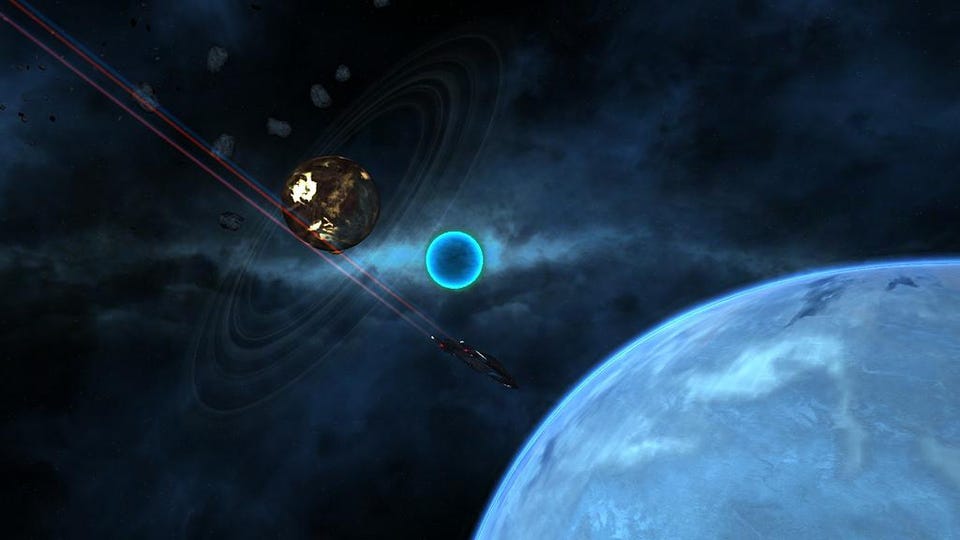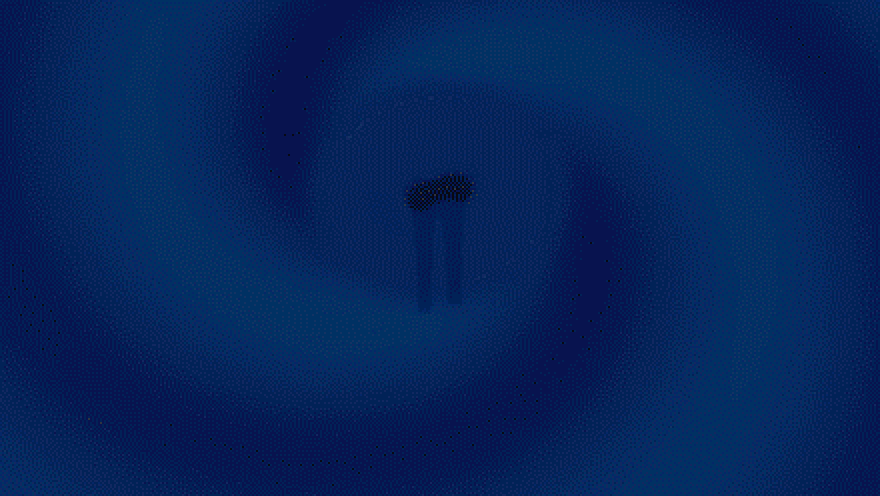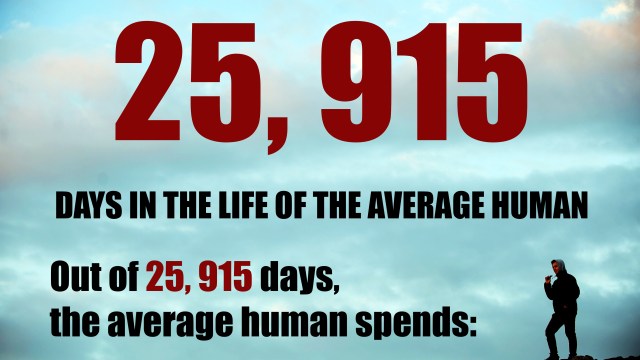Could a new type of supernova eliminate dark energy?
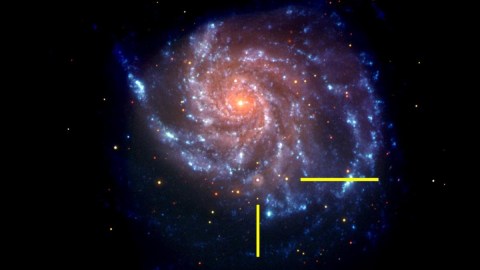
They’re judged to be “standard candles” and the greatest cosmic distance indicators. What if they’re not so standard?
“It’s everywhere, really. It’s between the galaxies. It is in this room. We believe that everywhere that you have space, empty space, that you cannot avoid having some of this dark energy.” –Adam Riess
Every once in a while, some Earth-shattering discoveries come along that forever change our view of the Universe. Back in the late 1990s, observations of distant supernovae made it clear that the Universe wasn’t only expanding, but that distant galaxies were actually speeding up as they moved away from us, a Nobel Prize-worthy discovery that told us the fate of our Universe. By measuring their optical properties and comparing them to supernovae seen nearby, we were able to determine their distances, finding that they were fainter (and hence, more distant) compared to what we’d expect. The interpretation was that this was because the Universe was accelerating due to some form of dark energy, but a 2015 study showed another possibility: that these supernovae appeared fainter because they were inherently different from the supernovae we saw nearby. Could this alternative explanation eliminate the need for dark energy?
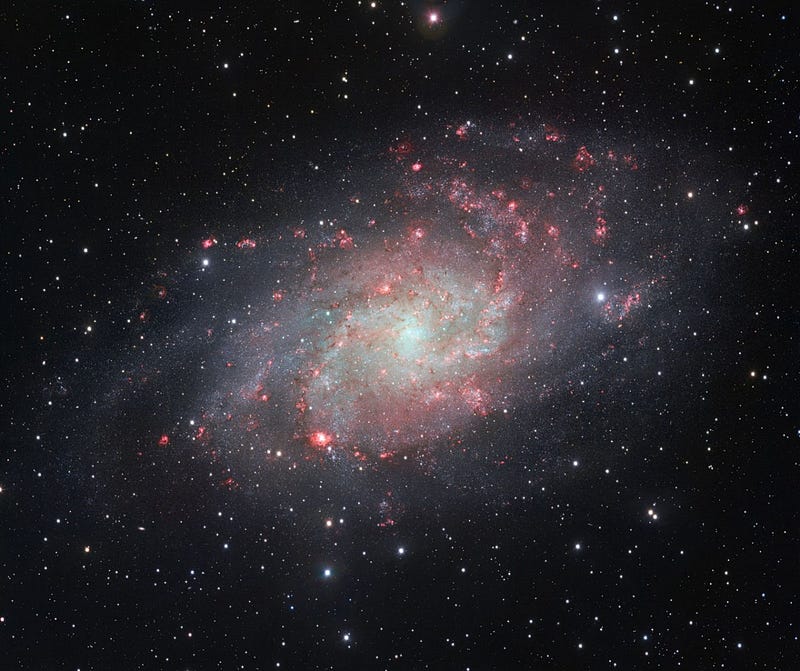
This is potentially a very, very big deal for our understanding of all there is, and how our Universe will end. Let’s go back nearly 100 years to a lesson we should have learned, and then come forward to today to see why. Back in 1923, Edwin Hubble was looking at a particular class of objects — the obscure, faint “spiral nebulae” in the sky — studying novae occurring in them and trying to add to our knowledge of just what these objects were. Some people contended that they were proto-stars within the Milky Way, while others believed them to be island Universes, millions of light years beyond our own galaxy, consisting of billions of stars apiece.
While observing the great nebula in Andromeda on October 6th of that year, he saw a nova go off, then a second, and then a third. And then something unprecedented happened: a fourth nova went off in the same location as the first.
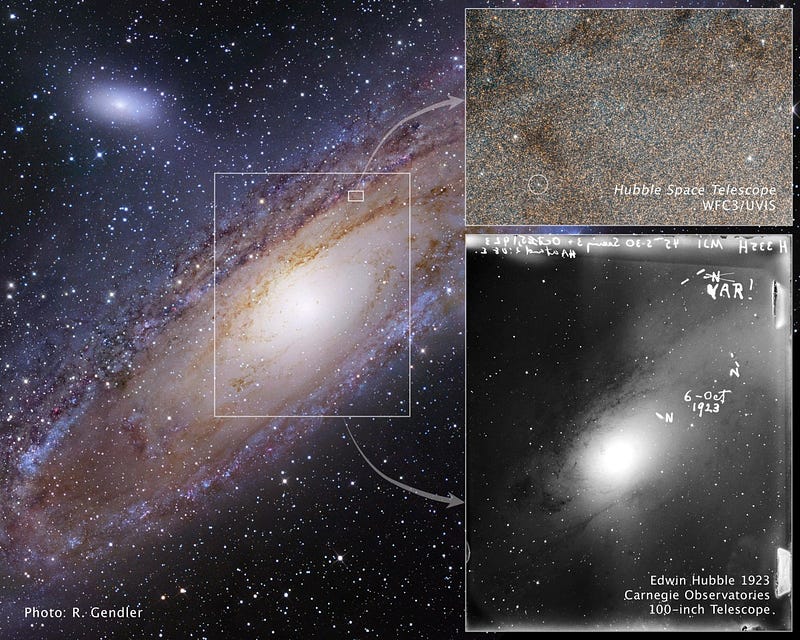
Novae do sometimes repeat, but it usually takes hundreds or thousands of years for them to do so, as they occur only when enough fuel builds up on the surface of a collapsed star to ignite. Of all the novae we’ve ever discovered, even the most rapidly replenishing takes many years to go off again. The idea that one would repeat in only a few hours? Absurd.
But there was something we knew about that could go from very bright to dim to bright again in just a few hours: a variable star! (Hence, his crossing out of “N” for nova and excitedly writing “VAR!”)
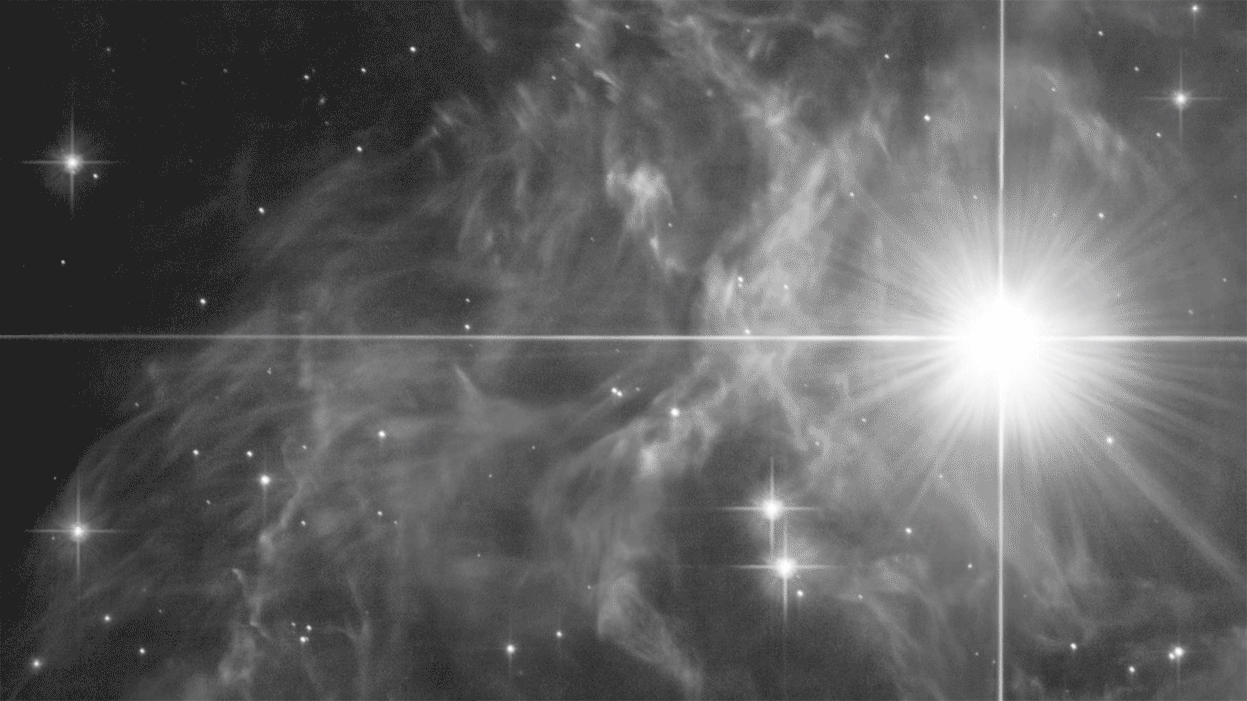
The incredible work of Henrietta Leavitt taught us that some stars in the Universe — Cepheid variable stars — get brighter-and-dimmer with a certain period, and that period is related to their intrinsic brightness. This is important, because it means that if you measure the period (something easy to do), then you know the intrinsic brightness of the thing you’re measuring. And since you can easily measure the apparent brightness, then you can immediately know how far away that object is, because the brightness/distance relationship is something we’ve known for hundreds of years!
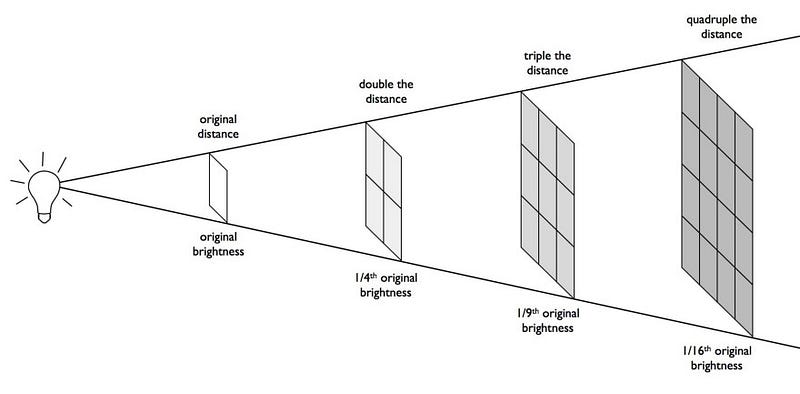
Now, Hubble used this knowledge of variable stars and the fact that we could find them in these spiral nebulae (now known to be galaxies) to measure their distances from us. He then combined their known redshift with these distances to derive Hubble’s Law and figure out the rate of expansion of the Universe.
Remarkable, right? But unfortunately, we often gloss over something about this discovery: Hubble’s conclusions for what that expansion rate actually was were totally wrong!
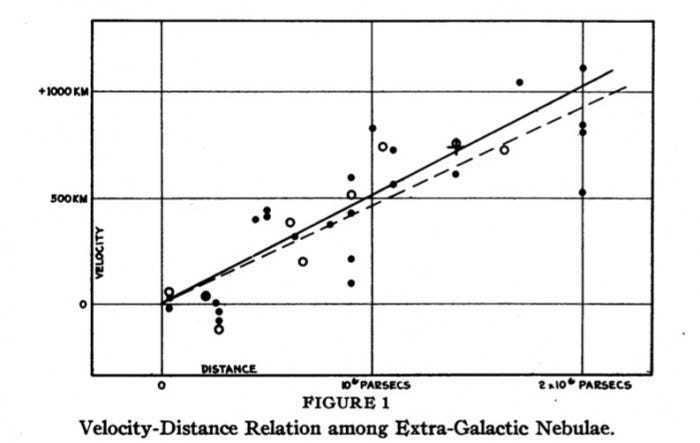
The problem, you see, was that the Cepheid variable stars that Hubble measured in these galaxies were intrinsically different than the Cepheids that Henrietta Leavitt measured. As it turned out, Cepheids come in two different classes, something Hubble didn’t know at the time. While Hubble’s Law still held, his initial estimates for distances were far too low, and so his estimates for the expansion rate of the Universe were far too high. In time, we got it right, and while the overall conclusions — that the Universe was expanding and that these spiral nebulae were galaxies far beyond our own — didn’t change, the details of how the Universe was expanding definitely did!
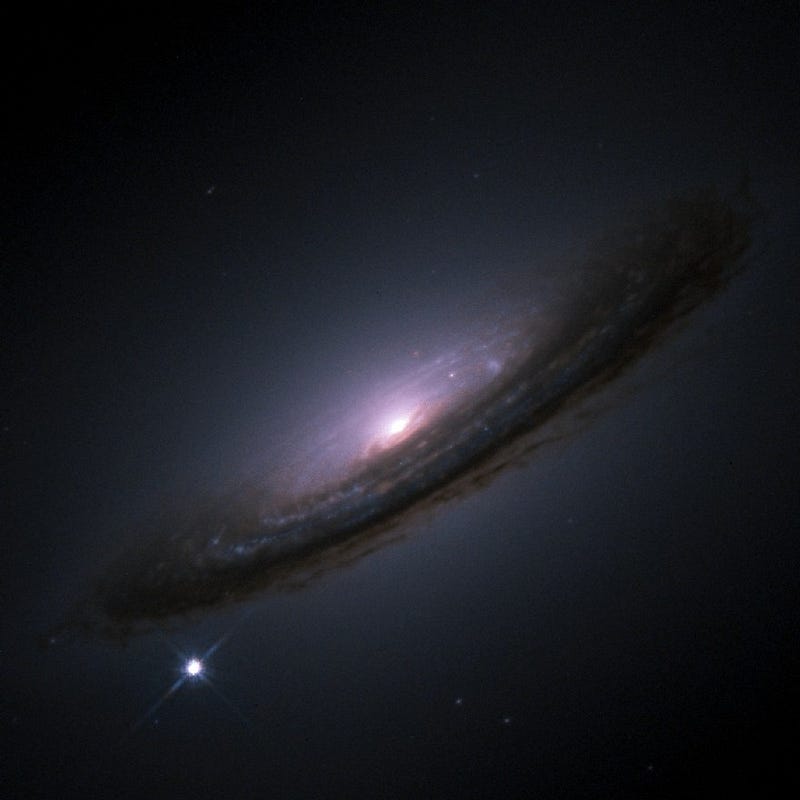
And that brings us to the present day, and a very similar problem, this time with supernovae. Far brighter than Cepheids, supernovae can often shine nearly as brightly — albeit for a very short time — as the entire galaxy that hosts it! Instead of millions of light years away, they can be seen, under the right circumstances, more than ten billion light years distant, allowing us to probe farther and farther into the Universe. In addition, a special type of supernova, type Ia supernovae, arises from a runaway fusion reaction taking place inside a white dwarf.
When these reactions occur, the entire star is destroyed, but more importantly, the light curve of the supernova, or how it brightens and then dims over time, is well-known, and has some universal properties.
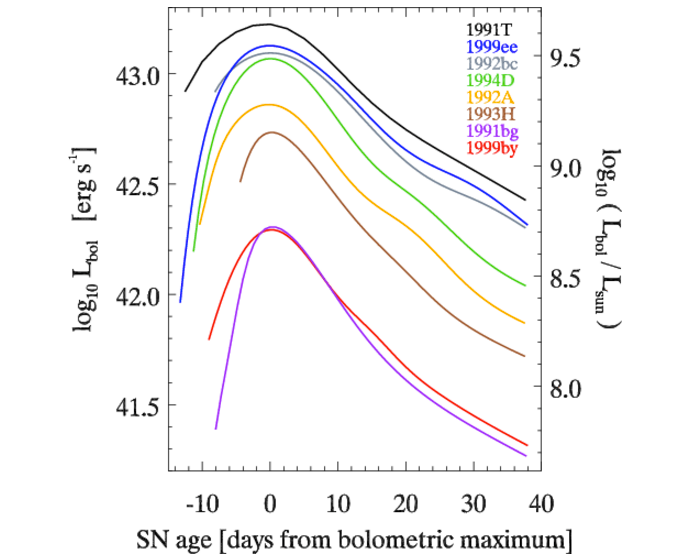
By the late 1990s, enough supernova data had been collected at large enough distances that two independent teams — the High-z Supernova Search Team and the Supernova Cosmology Project — both announced that based on this data, the Universe’s expansion was accelerating, and that there was some form of dark energy dominating the Universe.
It’s important to be appropriately skeptical of a revolutionary discovery like this. If it turned out that there was something amiss with the interpretation of this supernova data, the entire set of conclusions reached — that the Universe was accelerating — would have disappeared entirely. There were some possibilities for why this data might not be trustworthy:
- For one, there were two different methods by which supernovae could occur: from accretion of matter from a companion star (L), and from a merger with another white dwarf (R). Would both of these result in the same type of supernova?
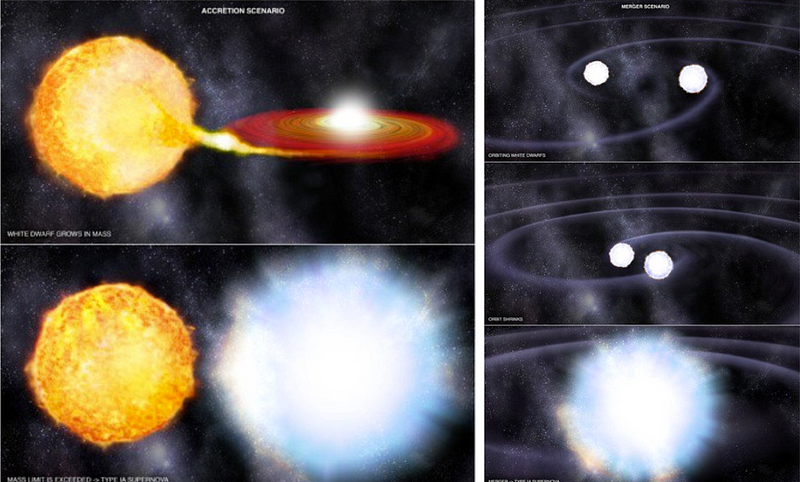
- For another, these supernovae at great distances may have been occurring in very different environments from the ones we see close by today. Are we positive that the light curves we see today reflect the light curves at great distances?
- And for still another, it’s possible that something happened to this light during their incredible travels from great distances to our eyes. Are we sure there isn’t some new type of dust or some other light-dimming property (like photon-axion oscillations) at work here?
As it turns out, these issues were all able to be resolved and ruled out; these things aren’t issues. But recently — and this is what the 2015 study concluded — we’ve discovered that these so-called “standard candles” may not be so standard after all. Just like the Cepheids come in different varieties, these type Ia supernovae come in different varieties too.
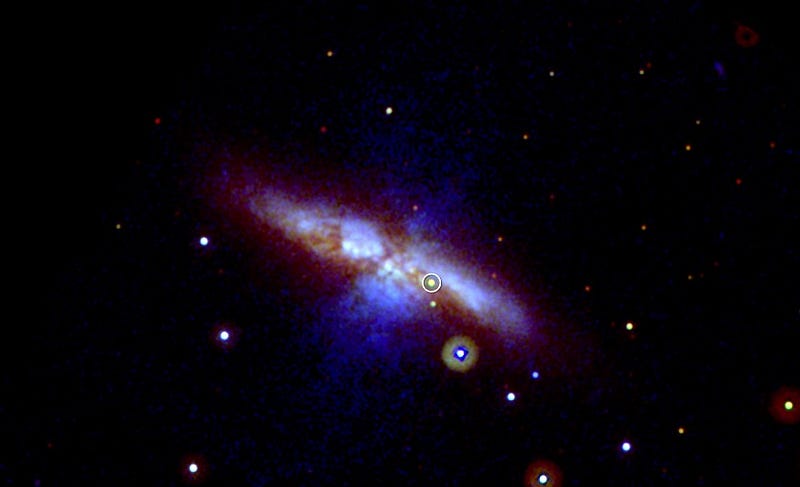
Imagine you had a box of candles that you thought were all identical to one another: you could light them up, put them all at different distances, and immediately, just from measuring the brightness you saw, know how far away they are. That’s the idea behind a standard candle in astronomy, and why type Ia supernovae are so powerful.
But now, imagine that these candle flames aren’t all the same brightness! Suddenly, some are a little brighter and some are a little dimmer; you have two classes of candles, and while you might have more of the brighter ones close by, you might have more of the dimmer ones far away.
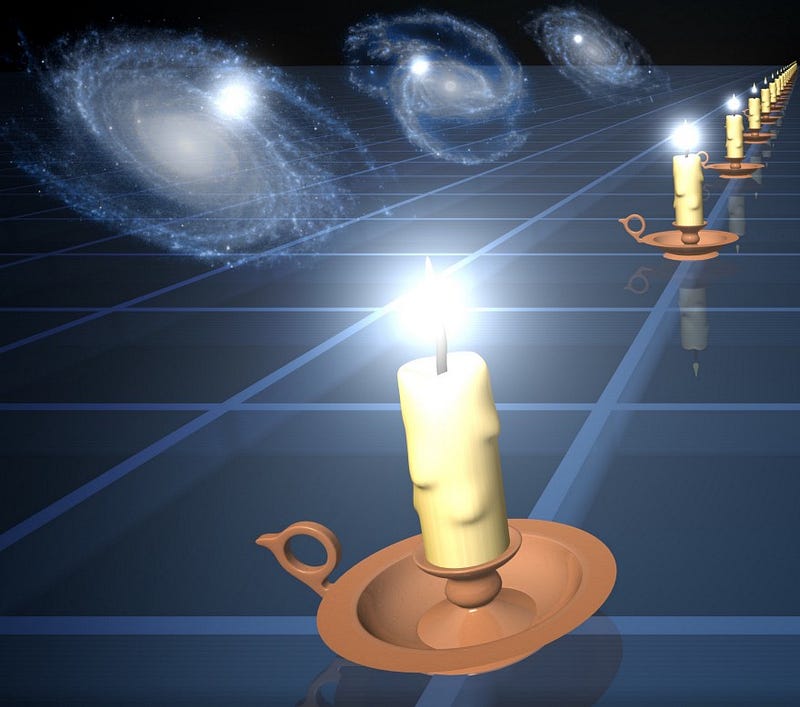
That’s what we think we’ve just discovered with supernovae: there are actually two separate classes of them, where one’s a little brighter in the blue/UV, and one’s a little brighter in the red/IR, and the light curves they follow are slightly different. This might mean that, at high redshifts (large distances), the supernovae themselves are actually intrinsically fainter, and not that they’re farther away.
In other words, the inference we drew — that the Universe is accelerating — might be based on a misinterpretation of the data!
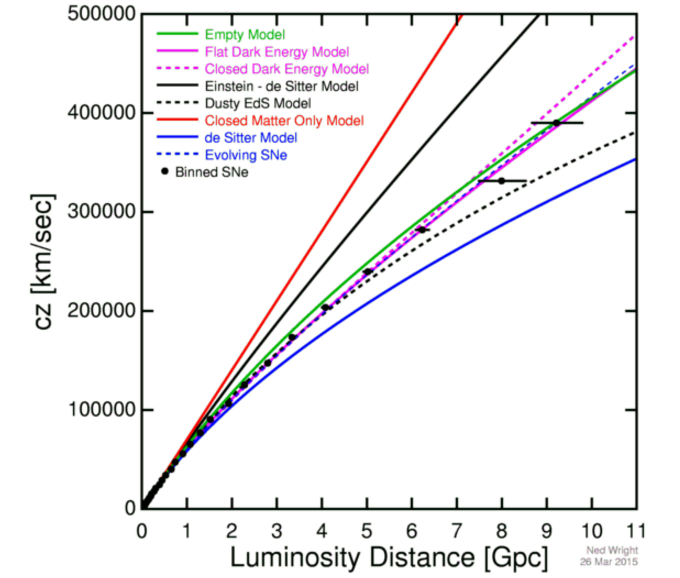
If we’ve got the distances wrong for these supernovae, maybe we’ve got dark energy wrong, too! At least, that would be the big worry. The smaller worry would be that dark energy is still real, but there might be less of it than we previously thought.
So which of these worries are valid? As it turns out, only the small one, and not the big one! You see, in 1998, we only had supernova data pointing towards dark energy. But as time went on, we gained two other pieces of evidence that provided evidence that was just as strong.

1.) The Cosmic Microwave Background. The fluctuations in the leftover glow from the Big Bang — as measured by WMAP and later, to higher precision, Planck — strongly indicated that the Universe was about 5% normal matter, 27% dark matter, and about 68% dark energy. While the microwave background doesn’t do a great job by itself of telling you what the properties of this dark energy are, it does tell you that you have about 2/3 of the Universe’s energy in a form that isn’t clumpy and massive.
For a while, this was actually an even bigger problem, as supernovae alone indicated that about 3/4 of the Universe’s energy was dark energy. It’s possible that these new revelations about supernovae, that there are two types of Type Ia supernovae with different intrinsic light curves, could help the data line up better.
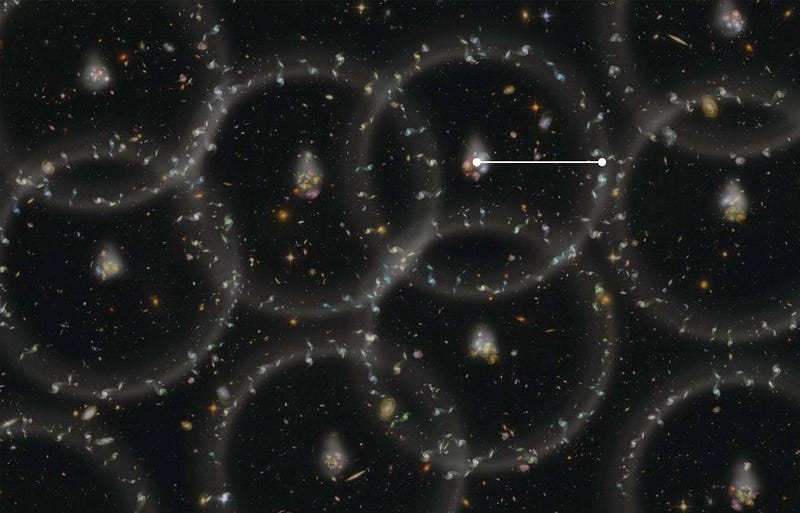
2.) The way galaxies cluster. In the early Universe, dark matter and normal matter — and how they do-and-do-not interact with radiation — govern how galaxies wind up clustered together in the Universe today. If you see a galaxy anywhere in the Universe, there’s this odd property that you’re more likely to have another galaxy about 500 million light years away from it than you are to have one either 400 or 600 million light years away. This is due to a phenomenon known as Baryon Acoustic Oscillations (BAO), and it’s because normal matter gets pushed out by radiation, while dark matter doesn’t.
The thing is, the Universe is expanding due to everything in it at all times, including dark energy. So as the Universe expands, that preferred scale of 500 million light years changes. Instead of a “standard candle,” BAO allows us to have a “standard ruler,” which we can also use to measure dark energy.
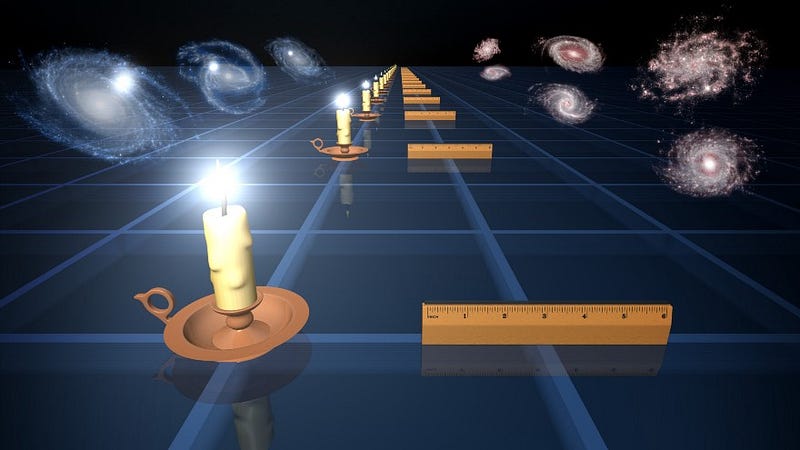
While this wasn’t the case in the late 1990s, as surveys like the 2dF GRS weren’t complete and the SDSS hadn’t even started, today’s measurements from BAO are just as good at present as the measurements from supernovae. What’s even more compelling is the fact that they seem to give the same results: a Universe that’s about 70% dark energy, and consistent with a cosmological constant and not domain walls, cosmic strings, or many other exotic types.
In fact, if we combine all three data sets, we find that they all pointroughly towards the same picture.
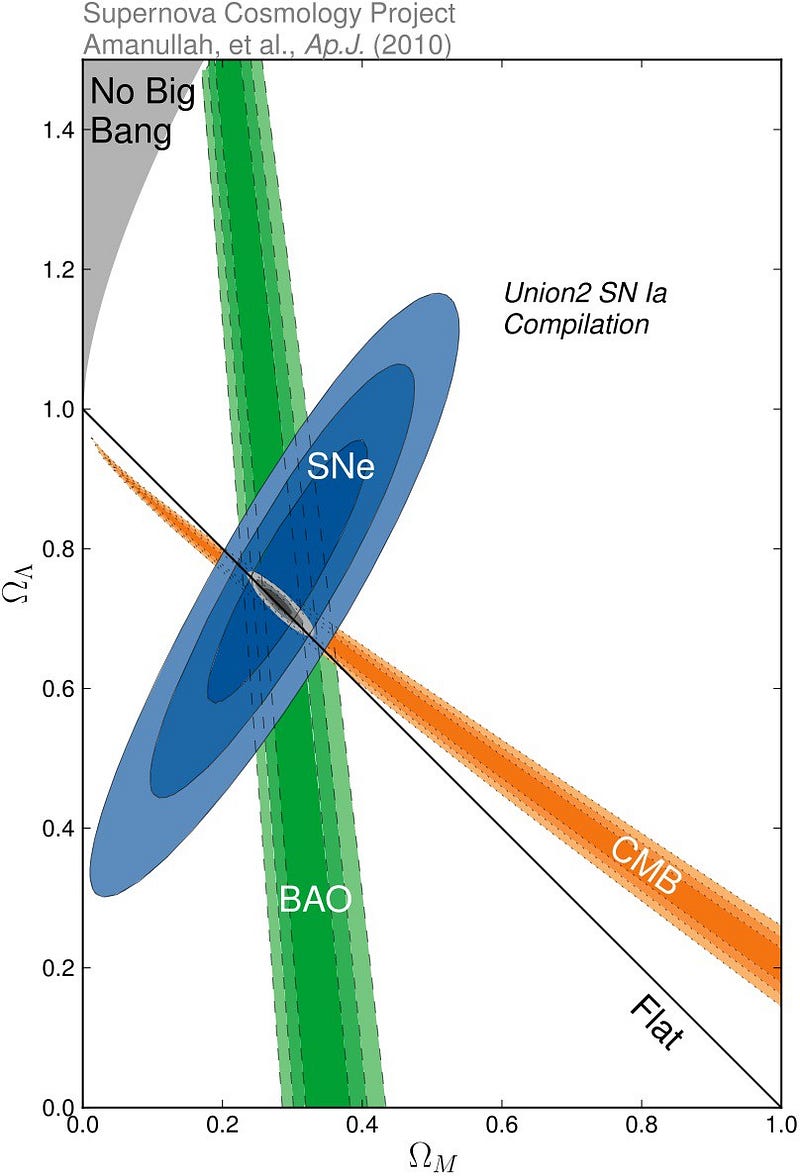
What we’ve learned from this is that the amount of dark energy and the typeof dark energy we infer from supernovae may change slightly and in a subtle manner, and this may actually be good for bringing the three methods — supernovae, the CMB and BAO — into better alignment. This is one of those great moments in science where one incorrect assumption doesn’t cause us to throw all our results and conclusions out, but rather where it helps us more accurately understand a phenomenon that’s puzzled us since we first discovered it. Dark energy is real, and thanks to this new discovery, we just might come to understand it — and its effects on the Universe — better than ever before.
This post first appeared at Forbes, and is brought to you ad-free by our Patreon supporters. Comment on our forum, & buy our first book: Beyond The Galaxy!

